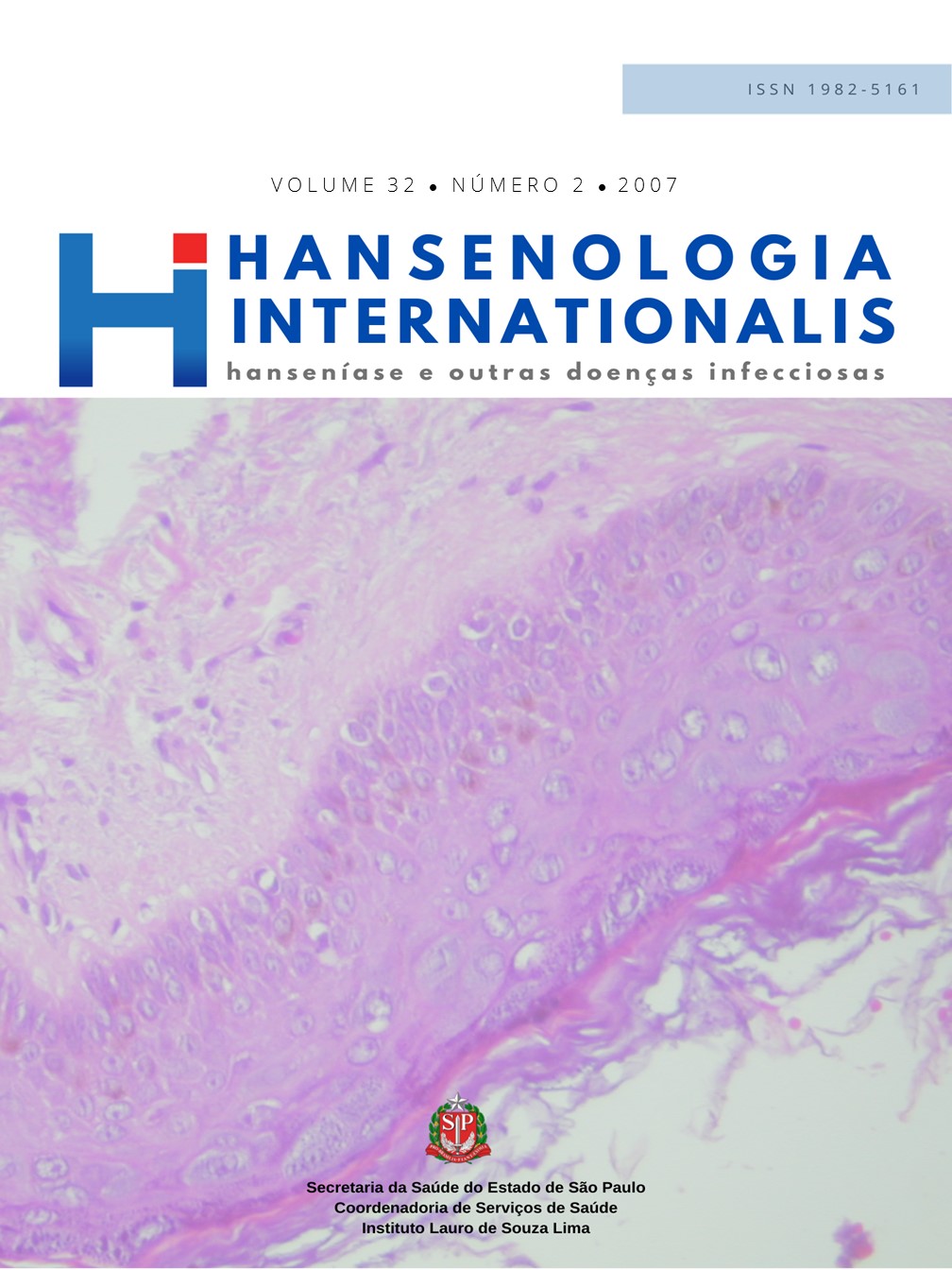Resumo
Os episódios reacionais em hanseníase mantêm-se como um dos grandes desafios para os Programas de Controle de Hanseníase em países endêmicos. Apesar de se reconhecerem os seus aspectos clínicos, ainda persistem questões abertas sobre vários aspectos relacionados a fisiopatologia destas reações, dificultando a definição de critérios para operacionalização do seu controle. Neste estudo avaliaram-se os fatores que influenciaram a inadequação do diagnóstico e acompanhamento dos casos que apresentaram reações hansênicas e da repercussão destes episódios no grau de incapacidade física determinada pela avaliação fisioterápica. Estudo descritivo, operacional, realizado no Estado de Rondônia durante o ano de 1997 nos casos novos diagnosticados e nos que receberam alta por cura. Realizou-se pesquisa em prontuários para identificação dos casos que desenvolveram reações. Para a entrevista foram selecionados pacientes com reações após a alta e os com progressão do grau de incapacidade durante tratamento, sendo realizada avaliação clínica. O estudo possibilitou avaliar a estrutura do programa de controle nos municípios selecionados. Em Rondônia, apesar dos avanços obtidos na detecção de casos, disponibilização da poliquimioterapia e redução do grau de incapacidades físicas no início e término deste tratamento, mantêm-se as dificuldades da abordagem destas reações. Faz-se necessária redefinição de prioridades incorporando a abordagem das reações como estratégica para melhorar a atenção integral aos pacientes.
Referências
2. Ministério da Saúde (BR). Secretaria de Políticas de Saúde. Departamento de Atenção Básica. Área Técnica de Dermatologia Sanitária. Legislação sobre o controle da Hanseníase no Brasil. Brasília: Ministério da Saúde; 2000.
3. Smith WCS. Review of current research in the prevention of nerve damage in leprosy. Lepr Rev 2000; (71): S138-S45.
4. Ministério da Saúde (BR). Secretaria de Políticas de Saúde. Departamento de Atenção Básica. Área Técnica de Dermatologia Sanitária. Hanseníase: Atividades de Controle e Manuais de Procedimentos. Brasília: Ministério da Saúde; 2001.
5. Ministério da Saúde (BR). Secretaria de Políticas de Saúde. Departamento de Atenção Básica. Área Técnica de Dermatologia Sanitária. Guia para o Controle da Hanseníase. Série Cadernos de Atenção Básica. Brasília: Ministério da Saúde; 2002.
6. World Health Organization. Expert Committee on Leprosy. (WHO Technical Report Series, 874). Geneva: World Health Organization; 1998.
7. Richardus JH, Meima A, Croft RP, Habbema JDF. Case detection, gender and disability in leprosy in Bangladesh: a trendanalysis. Lepr Rev 1999; 70(2): 160-73.
8. Van Brakel W.H. Periferal neuropathy in leprosy and its consequence. Lepr Rev 2000; (71): S146-S53.
9. Saunderson, P. The epidemiology of reactions and nerve demage. Lepr Rev 2000; (71): S106-S10.
10. Organização Mundial da Saúde. Manual para o controle de lepra. 2 ed. Washington: OMS; 1989.
11. Tropical: Hanseníase. 3 ed. Manaus; 1997. 165 p.
12. Van Brakel WH, Reed NK, Reed DS. Grading impairment in leprosy. Lepr Rev 1999; 70(2): 180-88.
13. Governo do Estado de Rondônia. Indicadores Municipais 1998/1999. Porto Velho: Seplan; 1999.
14. Meima A, Saunderson PR, Gebre S, Khabbema JDF. Dynamics of impairment during and after treatment: the AMFES cohort. Lepr Rev 2001; 72(2): 158-70.
15. Meima A, Saunderson PR, Gebre S, Desta K, Van Oortmars sen GJ, Habbema JDF. Factors associated with impairments in new leprosy patients: the AMFES cohort. Lepr Rev 1999; 70(2): 189-203.
16. Croft IRP, Niicholls PG, Richardus JH, Smith WCS. Incidence rates of acute nerve function impairment in leprosy: a prospective cohort analysis after 24 months (Bangladesh Acute Nerve Damage Study). Lep Rev 2000; 71(1): 18-33.
17. Nery JAC, Vieira LMM, Matos HJ, Gallo MEN, Sarno EN. Reactional states in multibacillary hansen disease patients during multidrug therapy. Rev Inst Med Trop S Paulo 1998; 40(6): 363-70.
18. Martelli CMT, Andrade ALSS, Grossi MAF, Leboeuf MAA, Lombardi C, Zicker F. Change in leprosy clinical pattern after multidrug therapy implementation. Int J Lepr 1995; 63(1): 95-7.
19. Croft IRP, Niicholls PG, Richardus JH, Smith WCS. Nerve function impairment in leprosy: design, methodology and intake status of a prospective cohort study of 2664 new leprosy cases in Bangladesh. The Bangladesh Nerve Damage Study. Lepr Rev 1999; 70(2): 140-59.
20. Nery JAC, Garcia CC, Wanzeller SHO, Sales AM, Gallo MEN, Vieira LMM. Características clínico-histopatológicas dos estados reacionais na Hanseníase em pacientes submetidos à poliquimioterapia (PQT). An Bras Dermatologia 1999; 74(1): 27-33.
21. Feliciano KVO, Kovacs MH, Sevilla E, Alzate A. Percepción de la lepra y las discapacidades antes del diagnóstico en Recife, Brasil. Rev Panam Salud Publica 1998; 3(5): 293-302.
22. Bechelli LM. Alguns aspectos psicológicos, sociais e econômicos relacionados com a lepra. J Bras Psiq 1987; 36(6): 321-4.
23. Amilarian MLT, Pinto EB, Ghirardi MIG, Lichtig I, Masini EFS, Pasqualin L. Conceituando deficiência. Rev Saúde Pública 2000; 34(1): 97-103.
24. Centers for Disease Control and Prevention (CDC - Atlanta - USA), Aplicativo Epi-Info versão 6.04d [CD ROM].
Statistical Package for Social Sciences (SPSS) em sua versão 25 9.0 [CD ROM].

Este trabalho está licenciado sob uma licença Creative Commons Attribution 4.0 International License.
